Do you dream of nurturing plants that not only flourish with vitality and productivity but also resist pests and diseases naturally? Look no further than companion planting!
This age-old gardening technique involves strategically pairing certain plants together to unlock a wealth of benefits that go beyond traditional gardening methods. From enhancing plant growth to protecting them from common threats, companion planting offers a holistic approach to cultivating a vibrant and resilient garden ecosystem. In this comprehensive guide, we’ll delve into the world of companion planting, exploring the benefits, popular plant groupings and tips for success.
Benefits of Companion Planting
Companion planting offers a myriad of benefits for your garden, both in terms of plant health and overall yield.
By selecting plants that complement each other’s growth habits, you can optimize space and increase production. Companion plants can also work together to enrich the soil by fixing nitrogen levels, enhancing nutrient uptake and reducing soil erosion. Some companion plantings can even improve the flavor and aroma of neighboring plants, making your harvest even more delicious.
An additional benefit of companion planting is that certain plant combinations can repel harmful pests or attract insects that prey on them, reducing the need for chemical pesticides. Complementary plantings can also attract a wide range of pollinators and beneficial organisms, creating a more balanced and resilient ecosystem in your garden.
Now, let’s explore some popular groupings of companion plants, along with their unique benefits:
Spinach, Lettuce, Daffodil and Radish:

Daffodils deter pests such as aphids and nematodes, while radishes repel cucumber beetles. The leafy greens benefit from the shade provided by taller daffodil stems.
Nasturtium, Cucumber, Pumpkin, Squash and Tomato:
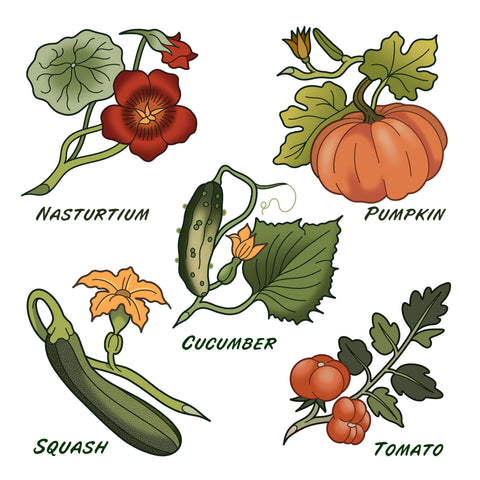
Nasturtiums act as a trap crop for aphids, while cucurbits benefit from the shade and weed suppression provided by the sprawling vines.
Marigold, Eggplant, Pepper, Cucumber and Tomato:

Marigolds repel nematodes and attract beneficial insects such as ladybugs, which prey on aphids. Eggplants and peppers benefit from the heat and humidity regulation provided by tall tomato plants.
Borage, Squash, Strawberry and Tomato:
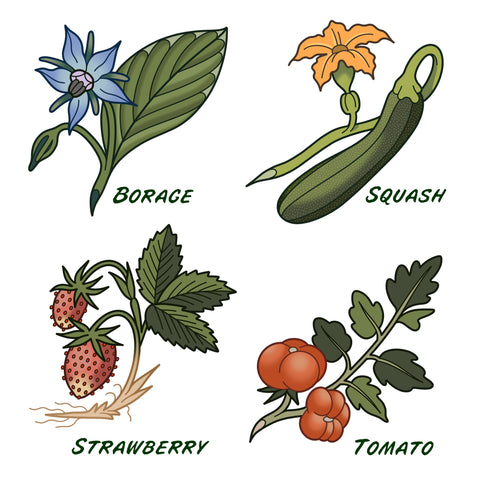
Borage attracts pollinators and deters pests such as tomato hornworms. Squash and tomatoes benefit from improved pollination, while strawberries appreciate the shelter provided by the dense foliage.
Pepper, Broccoli, Cauliflower and Cosmos:
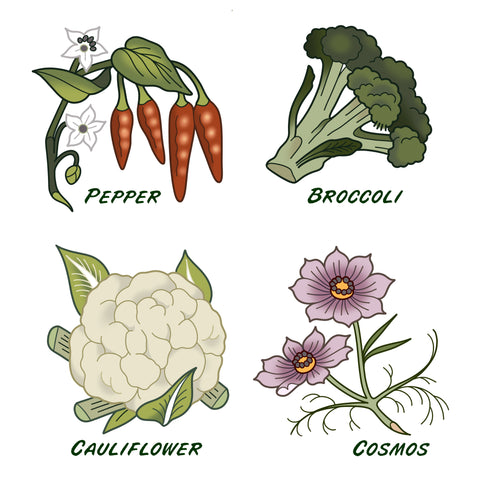
Cosmos attract beneficial insects such as hoverflies and predatory wasps, which prey on common pests such as aphids and cabbage worms. Broccoli and cauliflower benefit from increased pollination and pest control.
Calendula and Beans:
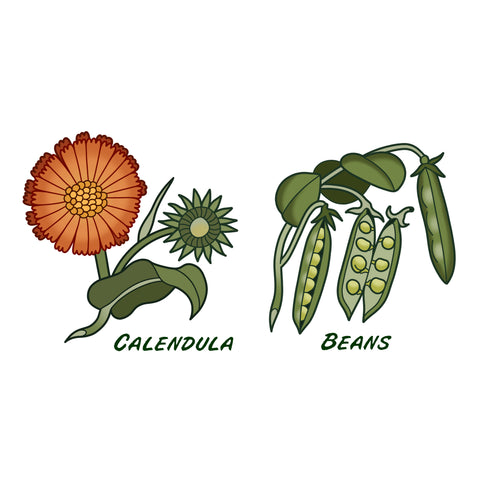
Calendula repels aphids and attracts pollinators, benefiting neighboring bean plants. Beans, in turn, fix nitrogen in the soil, providing a natural fertilizer for calendula.
Chamomile, Onion, Cucumber and Cabbage:
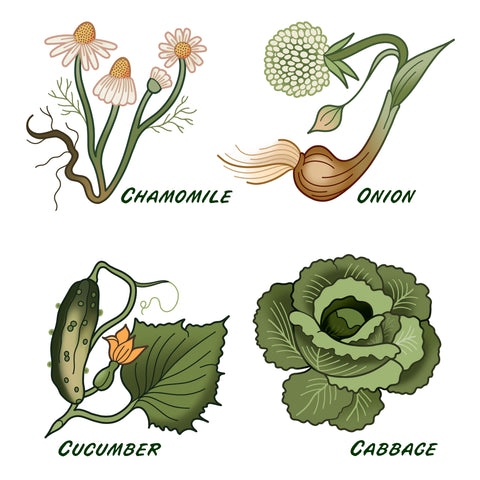
Chamomile improves the flavor of neighboring plants and deters pests such as cabbage moths. Onions repel aphids and cabbage worms, while cucumbers benefit from the shade provided by taller cabbage plants.
Sunflower, Corn and Beans:
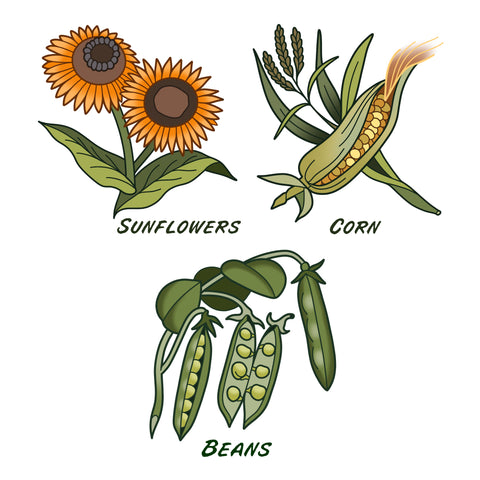
Sunflowers attract pollinators and provide structural support for climbing beans. Corn acts as a natural trellis for beans and provides shade for sunflowers.
Sweet Alyssum, Carrot and Lettuce:
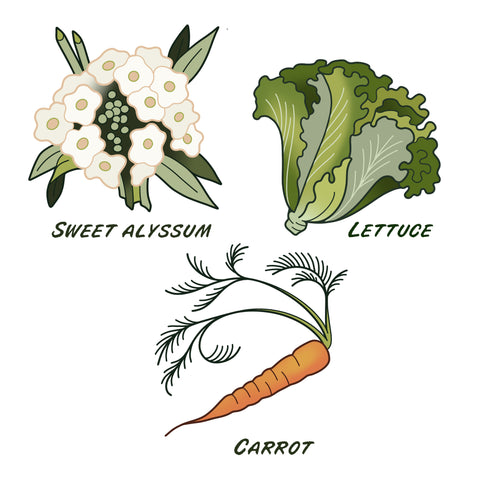
Sweet alyssum attracts beneficial insects such as hoverflies and parasitic wasps, which prey on aphids and caterpillars. Carrots and lettuce benefit from improved pollination and pest control.
Zinnia, Dill, Basil and Parsley:
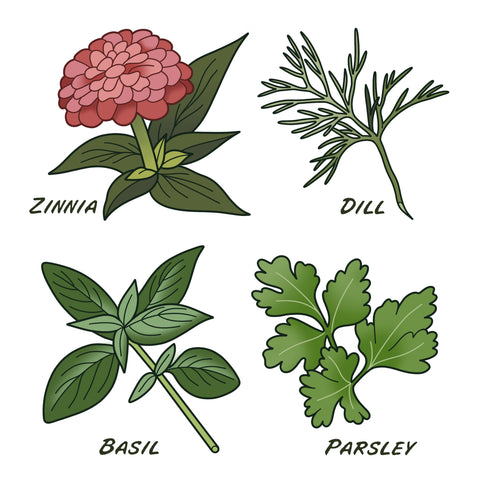
Zinnias attract pollinators and provide shelter for beneficial insects. Dill and parsley act as host plants for swallowtail butterflies, which prey on common garden pests. Basil enhances the flavor of neighboring plants and deters pests such as mosquitoes.
Lavender, Rosemary, Sage and Thyme:
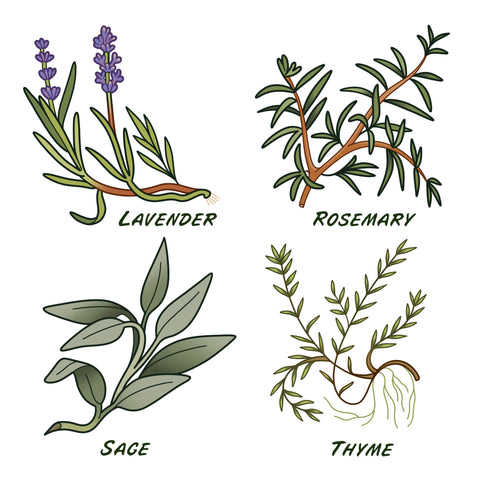
Lavender, rosemary, sage, and thyme are all aromatic herbs that repel pests such as mosquitoes and moths. They also attract beneficial insects and provide a beautiful, fragrant backdrop for your garden.
Yarrow, Sage, Oregano and Rosemary:
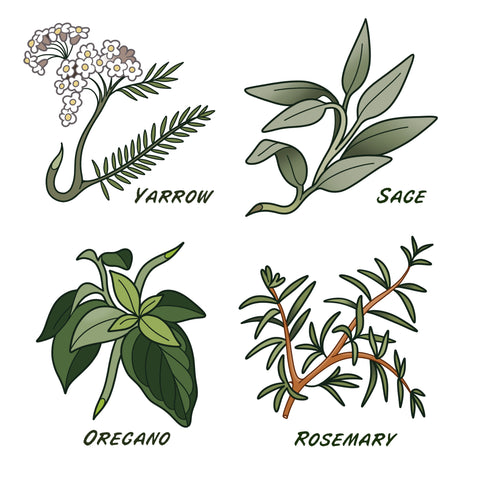
Yarrow attracts beneficial insects and improves soil health with its deep roots. Sage, oregano and rosemary are all aromatic herbs that repel pests and enhance the flavor of neighboring plants.
Tips for Successful Companion Planting
Embarking on the journey of companion planting requires careful consideration and attention to detail to ensure success in your garden. It’s essential to research plant compatibility thoroughly before pairing them together, as not all plants make suitable companions. Understanding the specific needs and interactions of each plant species is crucial for creating harmonious plant groupings.
Additionally, rotating crops seasonally is vital to maintain soil health and prevent the buildup of diseases. Avoid planting the same species in the same spot year after year.
To keep your garden thriving, maintain good garden hygiene by keeping it clean and tidy. Remove weeds, fallen leaves and debris regularly to minimize the risk of pests and diseases.
Lastly, provide your plants with appropriate water and nutrients. Ensure they receive adequate hydration and nourishment tailored to their individual needs. Avoid over-fertilizing, as this can lead to nutrient imbalances and excessive foliage growth, compromising the health of your plants.
By incorporating companion planting into your gardening routine, you can create a vibrant and thriving ecosystem that benefits both plants and pollinators. So, roll up your sleeves, grab your gardening gloves and start planning your companion plantings today! Your garden will thank you for it.
For more general gardening information, read the following articles:
Container Gardening Made Easy: A Beginner's Guide to Growing Plants in Small Spaces





